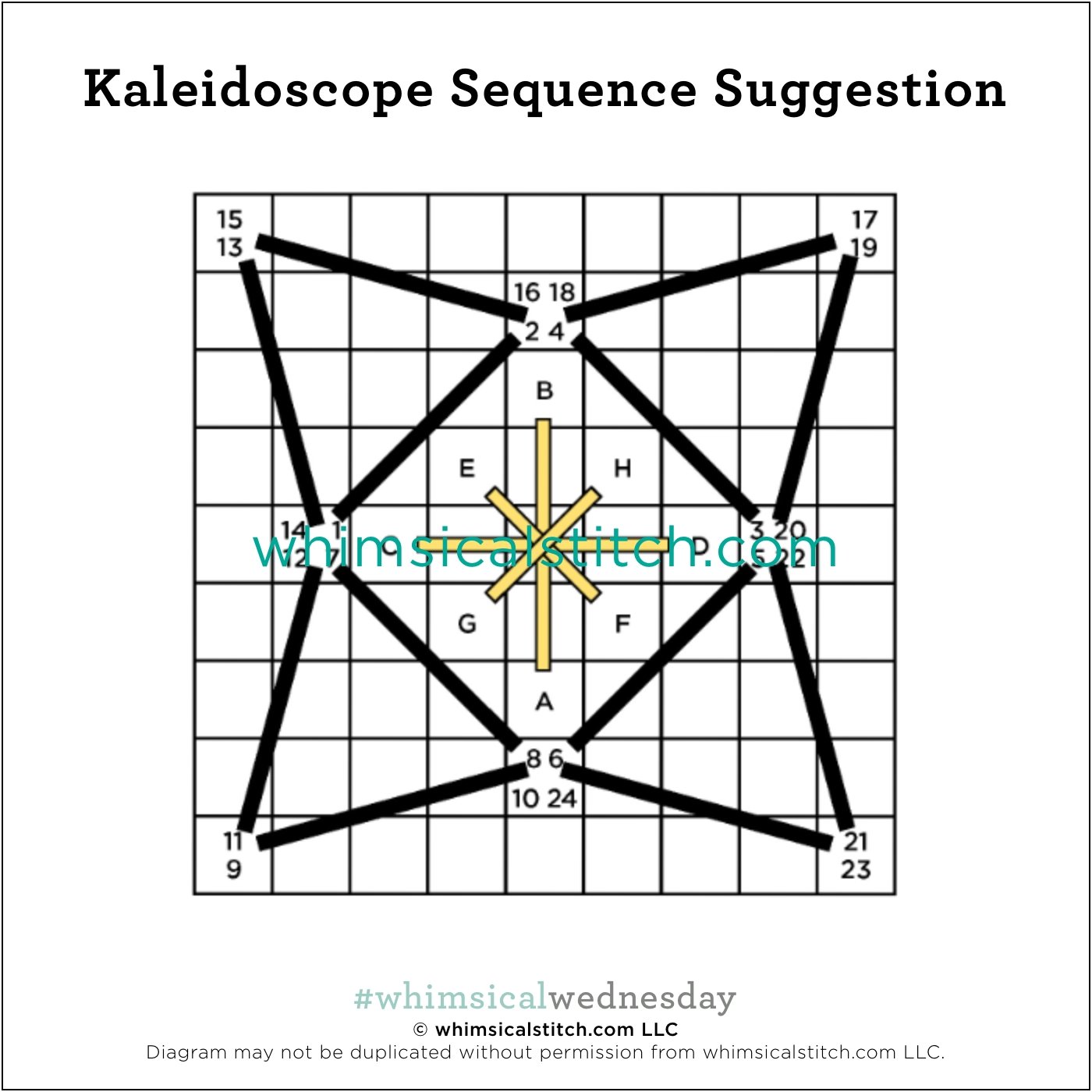Today’s stitch was a journey. I loved where it landed but it is possible a few expletives crossed my lips while figuring it out, changing it, and doing it again.
The stitched sample uses Petite Silk Lame (black lines in the diagram) and one ply of Soie D'Alger (yellow lines) on an 18M canvas from my stash.
I realize stitchers see patterns differently, and I hope the following breakdown will help you. Yes, this stitch requires concentration and counting throughout. The middle diagram above illustrates the repeated element I focused on to navigate the stitch. I started with the center diamond with sides three rows tall and wide. I then added oblique stitches one row wide (or tall) and four rows tall (or wide) to create the triangles from the diamond shape. To be honest, I thought that was where this stitch would end, but I decided to add the upright tied cross (yellow lines) to add more definition.
This stitch is dainty and dramatic at the same time, so it’s made for an area where you want to have fun. A Halloween moon is the first thing that popped into my head with two shades of Petite Silk Lame or Petite Entice. It will make a wonderful vase stitch with a lightweight Kreinik and one ply of silk floss (for 18M) and two plies of silk floss (for 13M). In my world, size 8 Kreinik is a lightweight metallic for 13M and 18M. I also like size 4 Kreinik for 18M.
I hope you have the perfect spot for it. Have fun playing with it. I hope you enjoy it!
As you are auditioning stitches (from any stitch source), count the number of canvas threads on the diagram that match your mesh size. And there you have what an inch of the stitch will look like. Evaluate that against the area where you plan to use the stitch and make your final decision. If you start integrating this step into your stitch selection process, you may be surprised at how many stitches you think are large are much smaller than you realize.
By (sometimes) including this step in my own process, I find I am now integrating much longer stitches than I ever thought I would. I used to think a stitch six rows long was super big. I have very much changed my tune, which has helped me expand my creativity, especially for large-space stitches.
Today’s stitch diagram, along with all other #whimsicalwednesday and #smallspacesunday stitch diagrams, can also be found on a Pinterest board here. Be sure to follow whimsicalstitch.com on Facebook, Pinterest, Instagram, and Twitter.
If you like what you see on this blog, there's more. Mary’s Whimsical Stitches is a series of four books offering contemporary how-to collections of more than 200 stitches (in each volume) for all stitchers, regardless of skill level. All books include updated and sequenced diagrams from this blog, plus a collection of all-new stitches from private lessons and other class projects. Visit here to find a needlepoint retailer that carries my books.
New to needlepoint or looking for a refresher? Please download a handy how-to guide covering basic needlepoint stitches and stitch compensation techniques along with new top-line information on needlepoint materials and tools, how to handle threads, and other helpful needlepoint resources.
whimsicalstitch.com also sells Stitch Guides and Stitch Concepts for Melissa Shirley Designs, Zecca Designs, Sandra Gilmore, Purple Palm, Maggie, and Penny MacLeod, and many more. Click here to see the newest guides and click here to see the entire collection.
I hope you have the perfect spot for this stitch! Please enjoy! Have a wonderful #whimsicalwednesday!
A Note about Diagrams
I use color in diagrams to make them as clear as possible. The primary function of different colored lines is to illustrate a stitch sequence. For example, the layering of colors demonstrates you add them in that order. They can also provide ideas on integrating additional threads (one line for each color). Or, you can use the same thread for all color lines. That's where I encourage you to use your imagination for the space you are stitching!


























